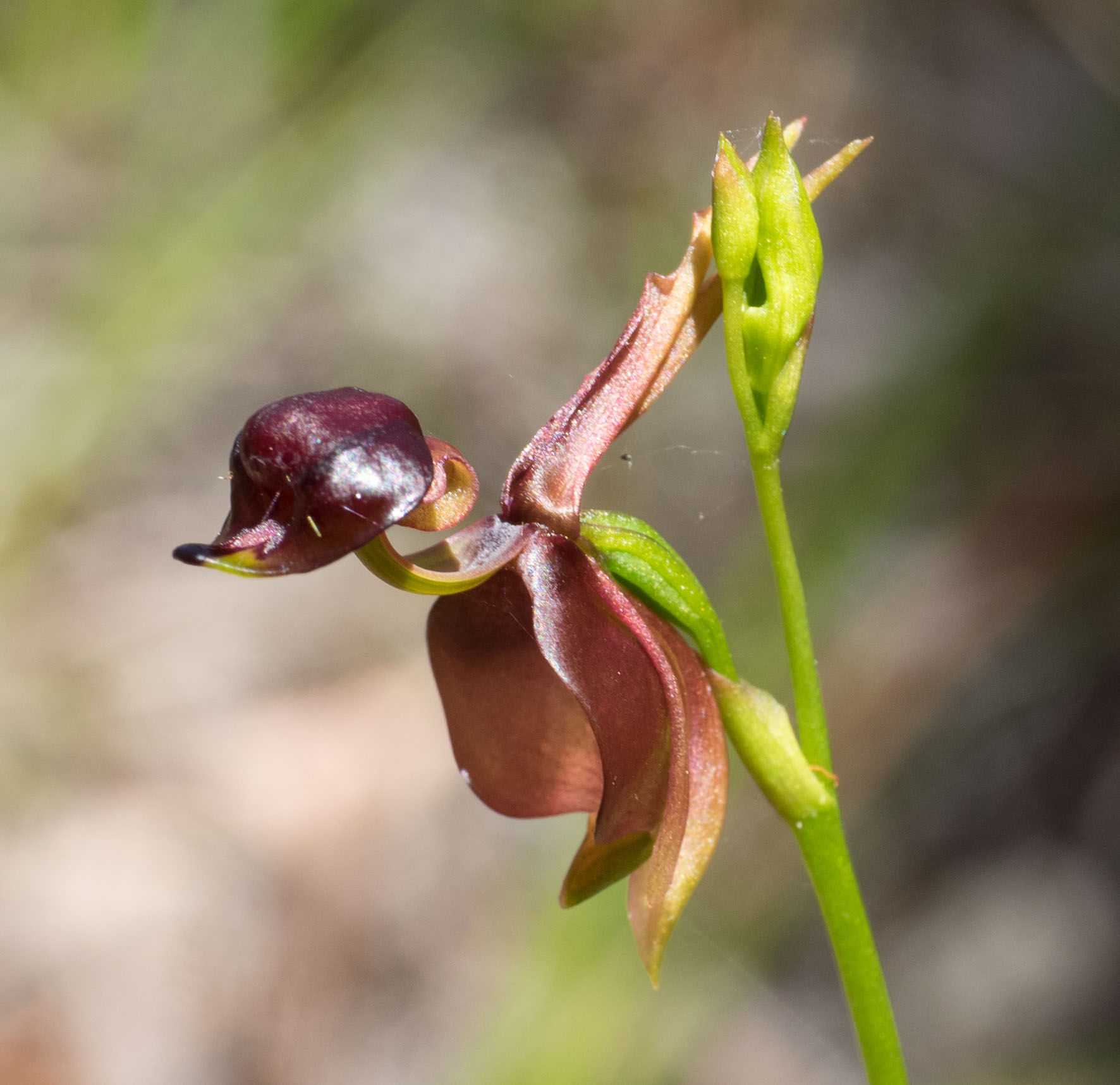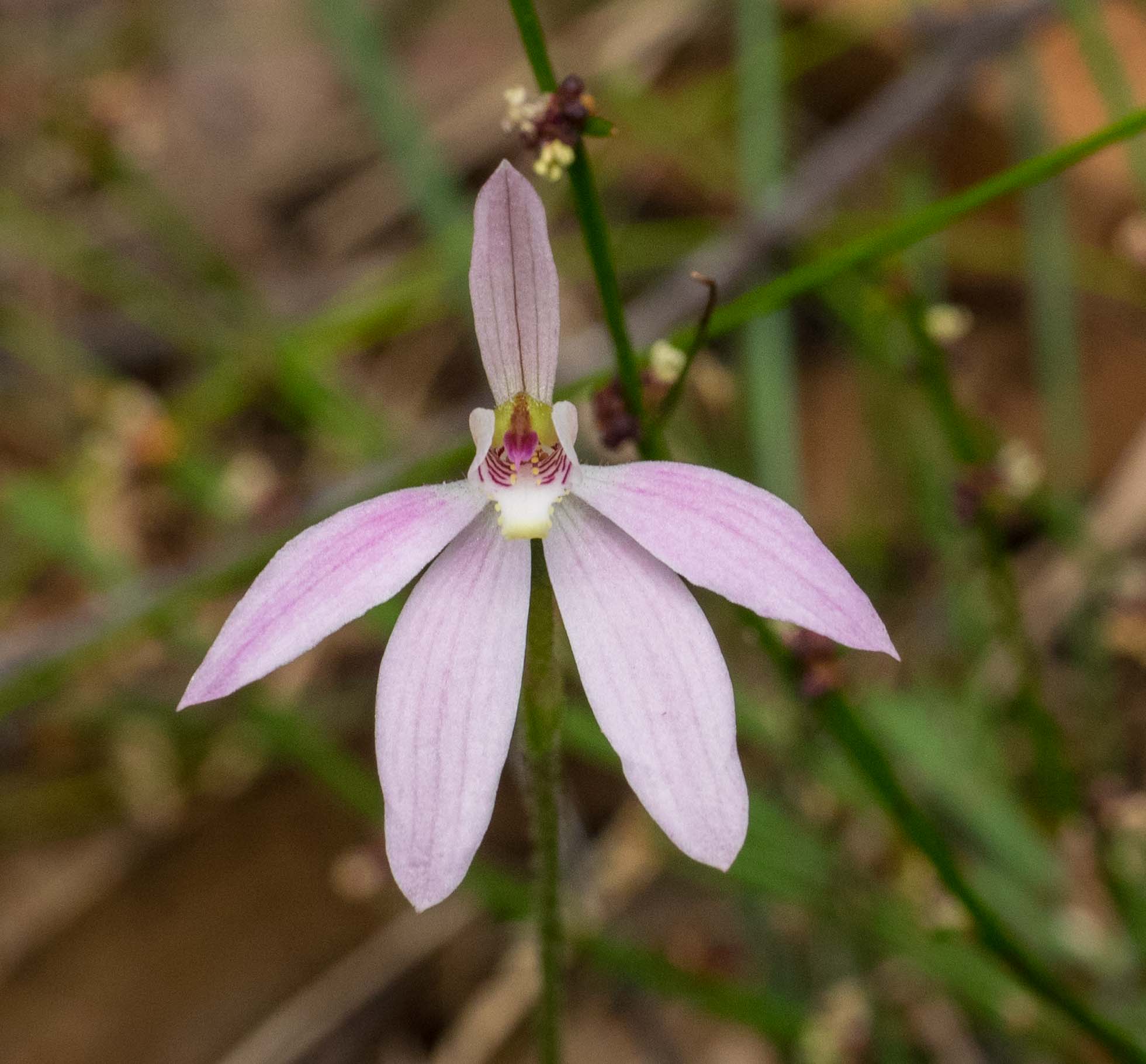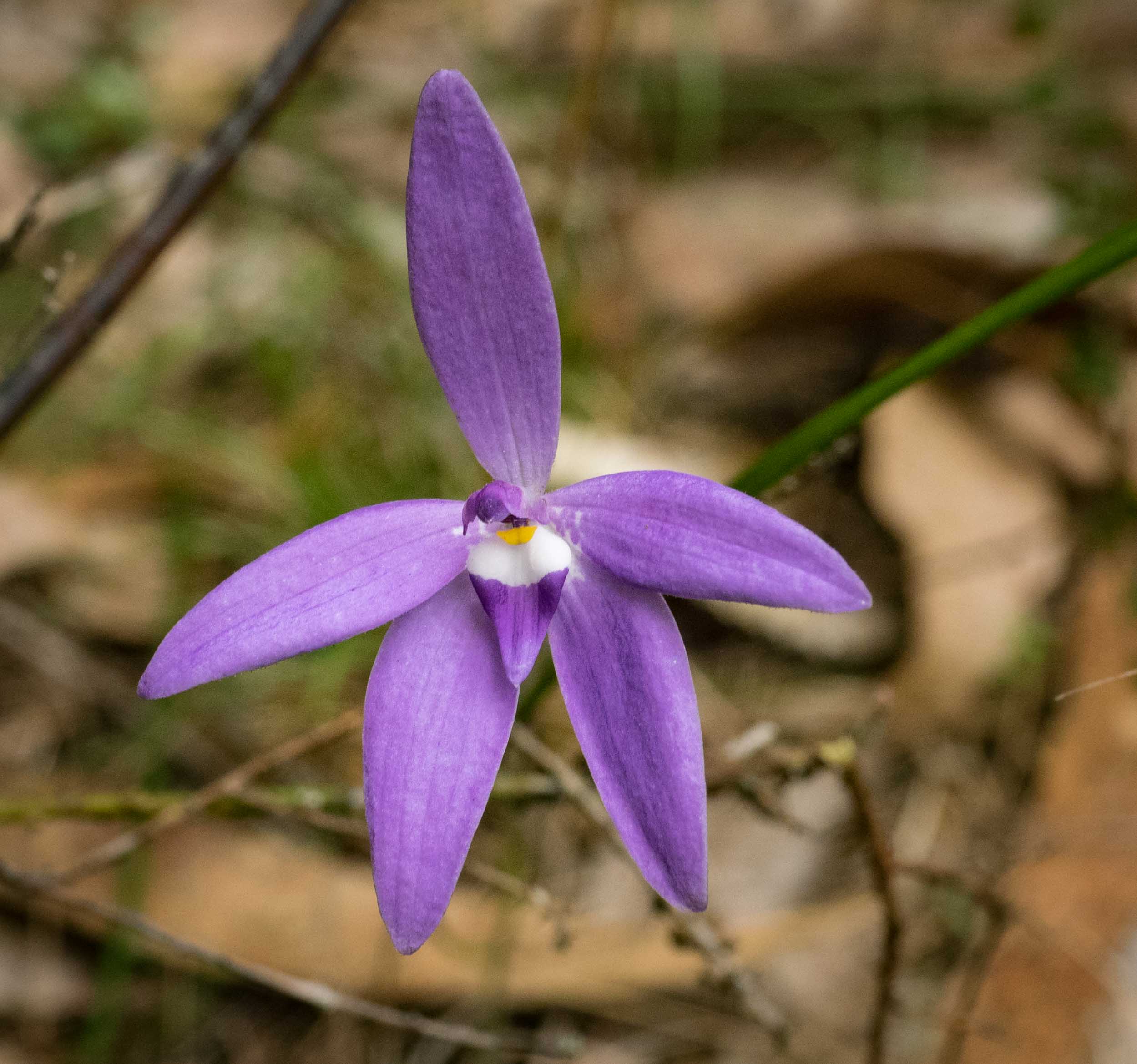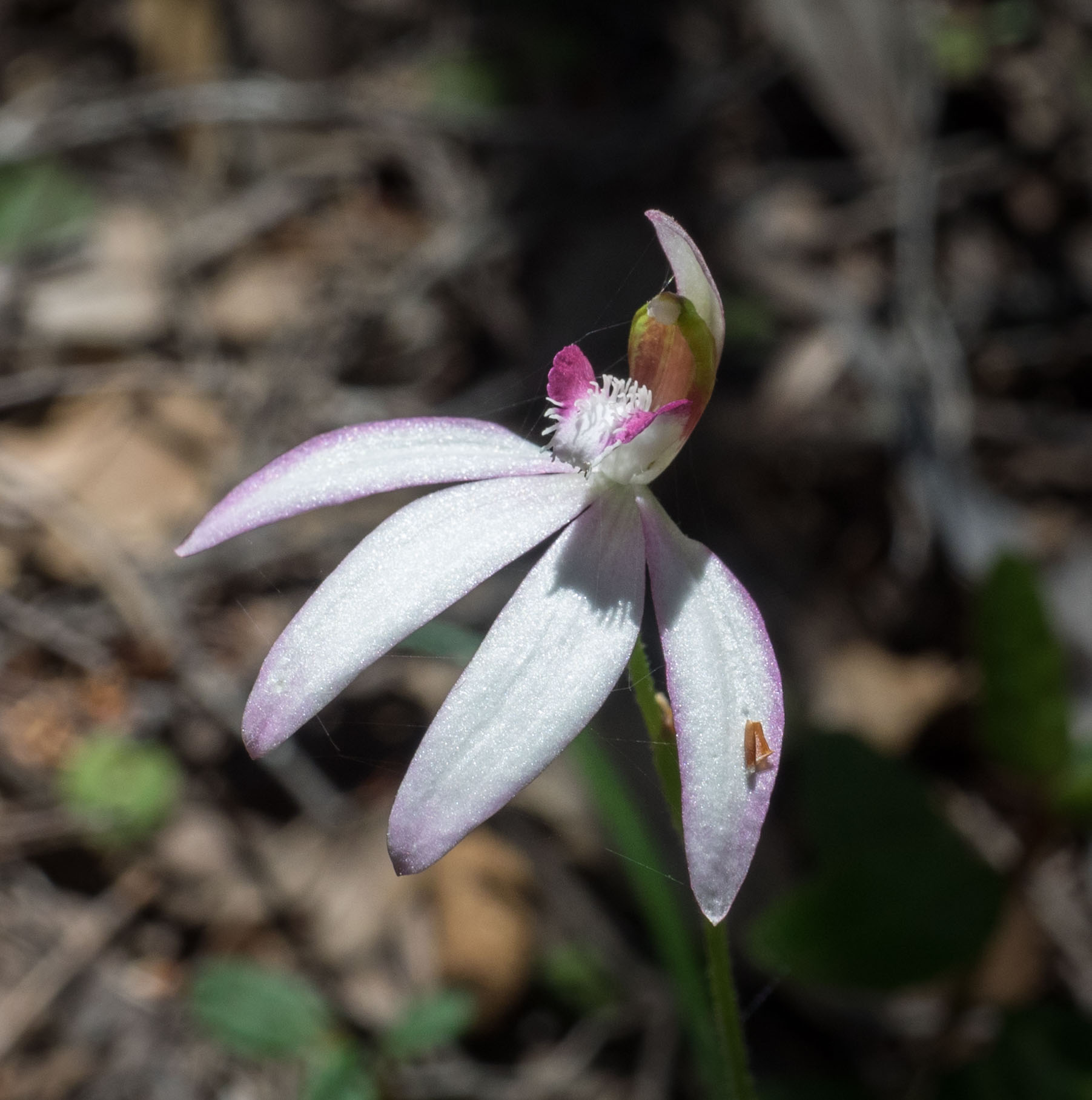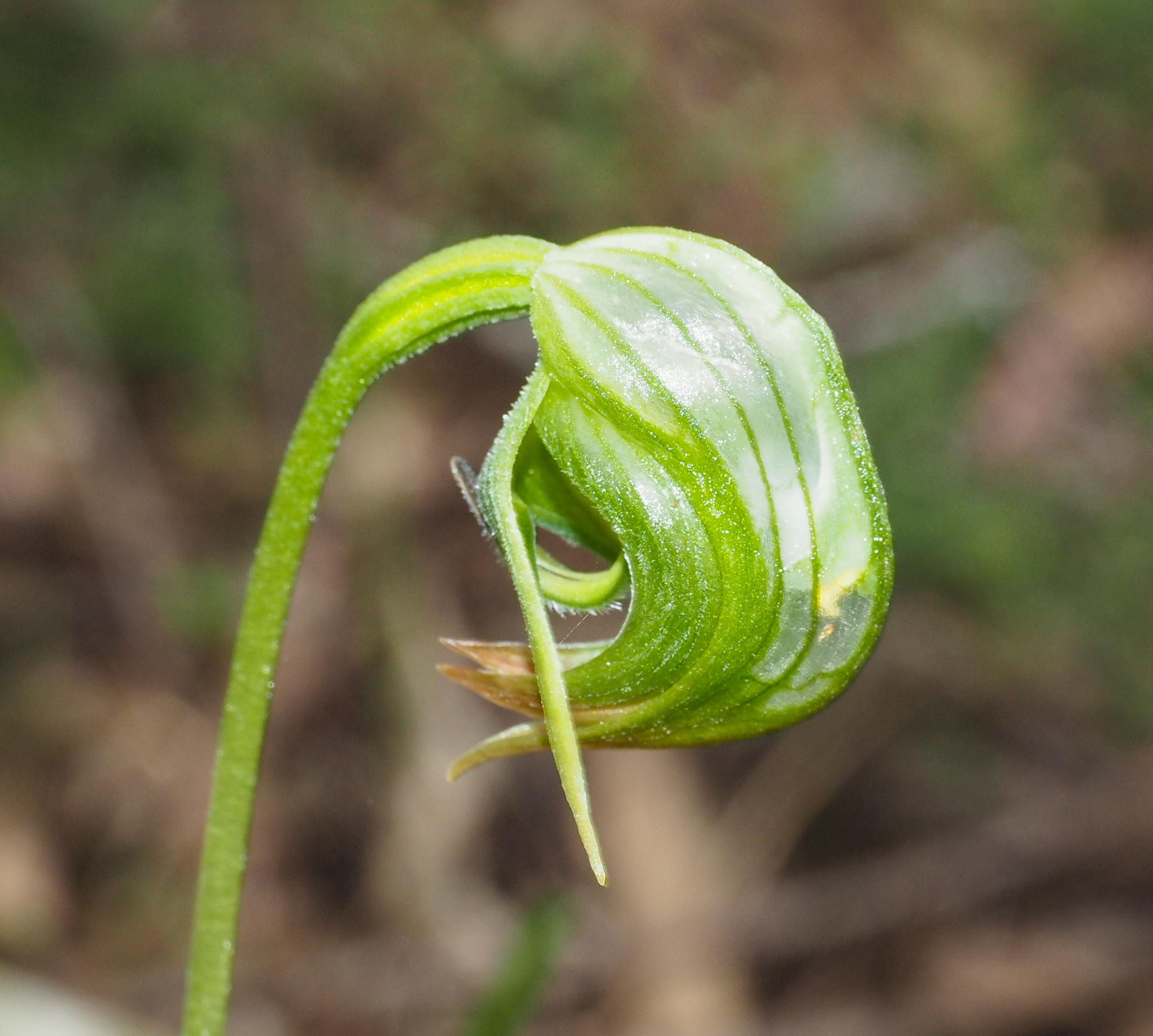The orchid flower - botanical origami!

The orchid family is the most successful group of flowering plants on the planet, at least if you measure success in terms of number of species in that family - between 20,000 and 30,000!
This amazing diversity is achieved in part by a high degree of specialisation of flower shape and function. Orchids have twisted, folded and generally mucked around with the "common-garden" flower shape to produce an array of beautiful and intricate pollination devices.
Yes, that's what this is all about. Flowers are nothing more than devices to attract animals - insects, birds and mammals - that will carry out the job of transferring pollen from the male parts of one flower to the female parts of another flower. Sort of thing a scientist would say, isn't it?
But even a scientist can appreciate the beauty of the White Fingers Orchid (Caladenia catenata) which I saw flowering on the block two weeks ago. Many native orchid species come into flower at this time of the year. Most of these are small and easy to overlook - but a real treat to find.
Yesterday, we drove the short 5km to the coast to check out a spot in the forest where we have previously found many orchids. What we found was a veritable forest of orchids!
A patch of Maroonhood Orchids (Pterostylis pendunculata) on the forest floor
This panel shows the seven different orchid species that we discovered at this one spot and another a short drive away. Note that this doesn't include a carpet of young Flying Duck Orchids (Calanea major) at one site, which will open up in a couple of weeks.
Mayfly Orchid (Acianthus caudatus)
Dainty Bird Orchid (Chiloglottis trapeziformis)
Maroonhood (Pterostylis pedunculata)
These seven examples illustrate the diversity of flower shapes found in different species of orchids. The petals, sepals and reproductive parts of the flower have all been modified in different ways.
The Mayfly Orchid shows just how extreme these modifications can be - natural origami! The White Fingers Orchid is the only one that even vaguely resembles a "normal" flower.
The four Pterostylis (Greenhood) species show variations on a common theme.
Blunt Greenhood (Pterostylis curta)
Trim Greenhood (Pterostylis concinna)
White Fingers Orchid (Caladenia catenata)
Nodding Greenhood (Pterostylis nutans)
Particular species of insects are attracted to each species of orchid. Different orchids do this in different ways. Some like the Dainty Bird Orchid, display bits that look like a female fly. I talk about a couple of other strategies below.
Once the insect enters the flower, a cunning piece of machinery comes into operation. Triggered by the movement of the insect, it ensures that a large, sticky blob of pollen (a pollinia) is plopped onto the unsuspecting creature. The insect flies off to visit another orchid of the same species, where it transfers that load of pollen to the receptive female parts of that flower. Hey presto - Pollination!
While photographing the Greenhood flowers, I noticed some small insects wandering around the flower and exiting the narrow opening under the "hood".
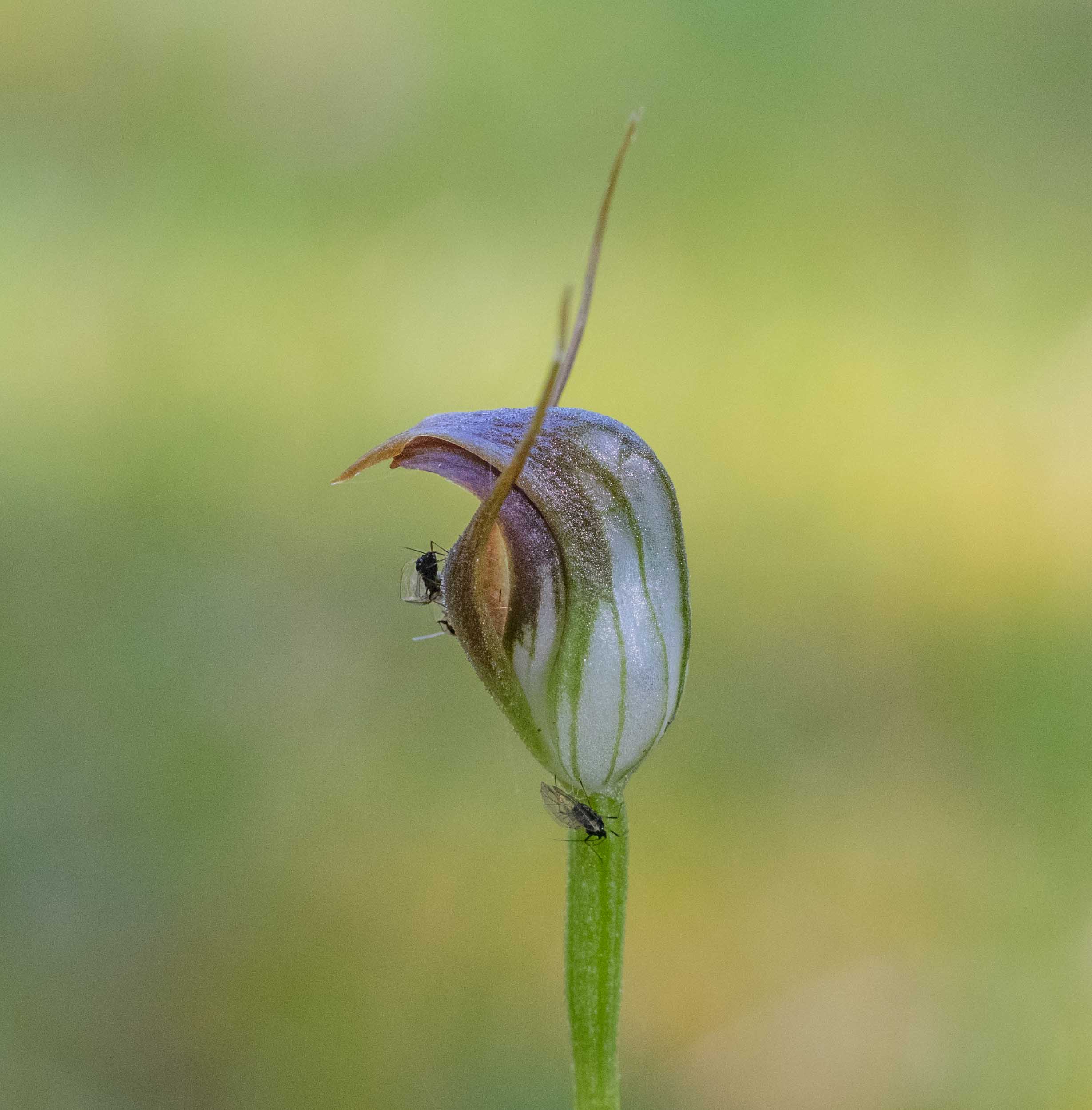
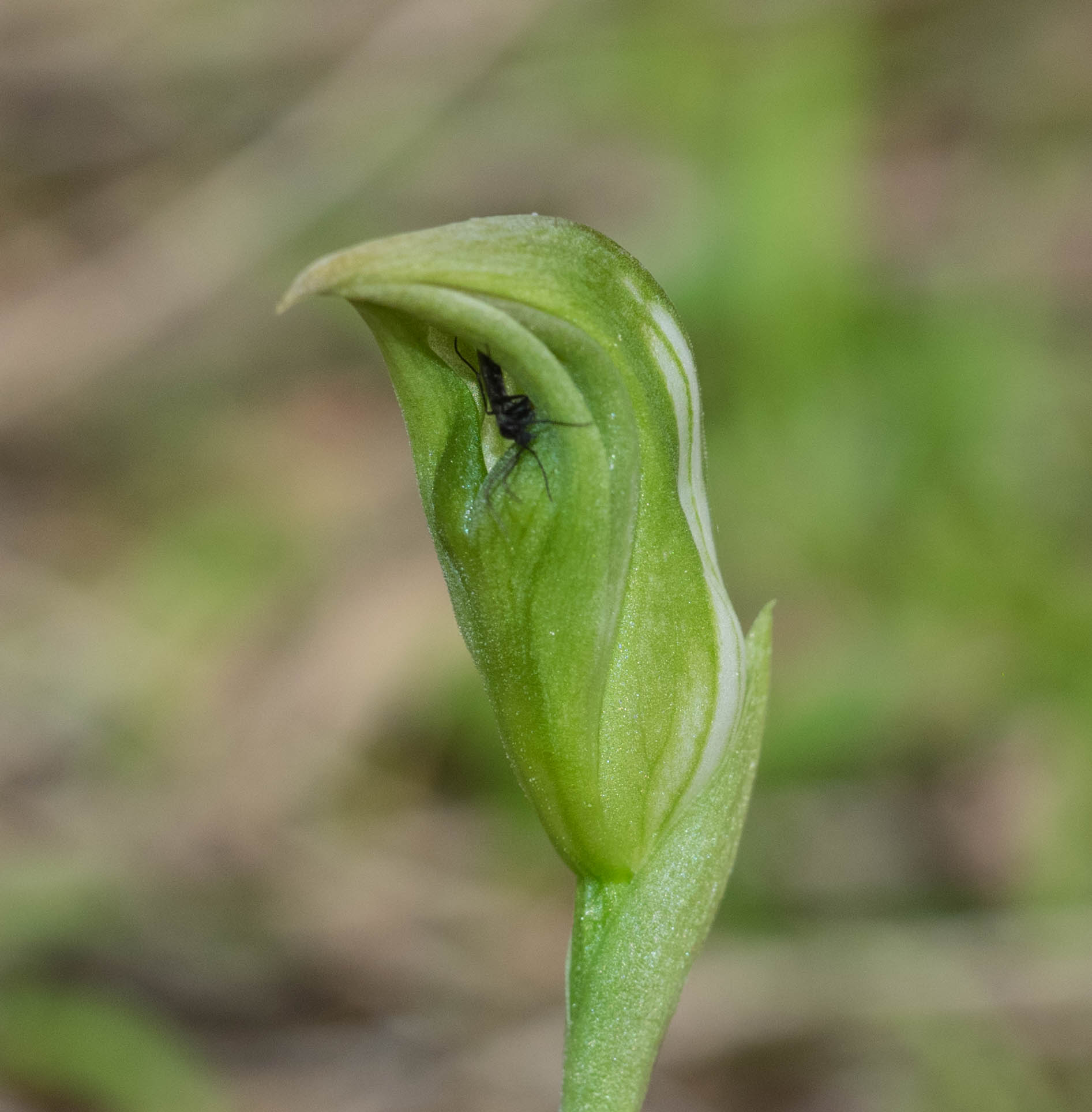
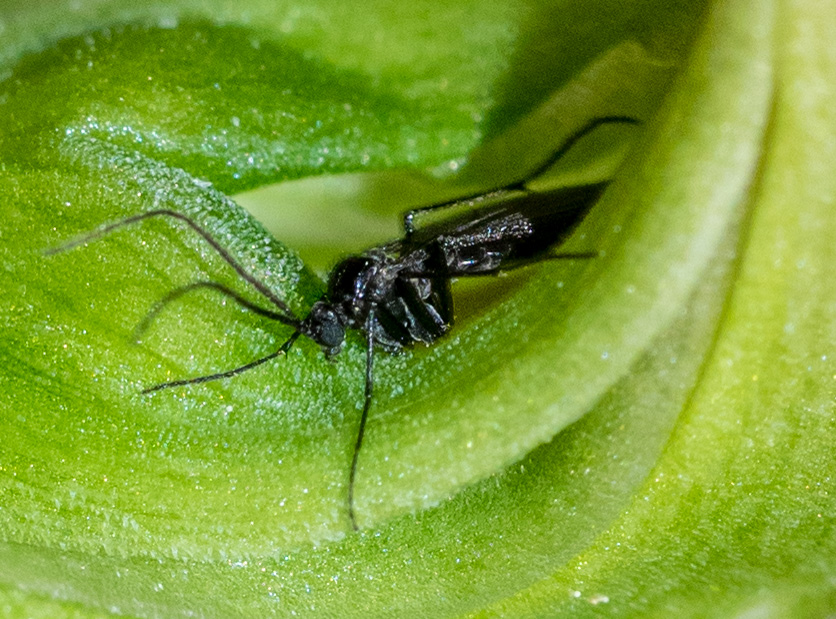

Identification of these insects had to wait until I was back home, where I zoomed in on the image on the computer screen. I discovered that the bug was a fly and furthermore, one I had been spending the two previous days trying to identify. Here is a photo of the dipteran in question under the stereomicroscope. It's small - around 3mm long. Kerri had caught a couple of these in a net when sweeping the vegetation around our pond at home and I took on the challenge of identifying it. How some pensioners pass their time.
These two days of research had led me to conclude that this critter is a species in the fly family Sciaridae, commonly know as Fungus Gnats. I had no idea at the time that this fly would soon come back into my life in a different context.
It all came together in a very satisfying way when Kerri discovered a paper on pollination in the Victorian species of Pterostylis. Long story made short:
The labellum of the Greenhood flower (a modified petal inside the flower) emits a scent which is a mimic of the female fungus gnat's sex pheromones. Alternatively, the labellum in some Greenhoods emits a scent that is suggestive of food - a false promise in most cases.
Attracted by the pheromones, the male fly "engages" with the labellum (as the authors so discreetly put it).
The labellum is spring loaded and it flings the fly into the flower, where it becomes briefly trapped.
While inside, the fly gets daubed with the pollen-laden pollinia.
After a few minutes, the fly finds its way out and heads off in search of another flower.
After entering that flower, it brushes the pollinia against the stigma and pollination ensues.
Isn't Nature wonderful!
Just to finish this story - here's a bit more ecology. You may have noticed in some of the Greenhood photos that the flower is strewn with cobwebs. Here are some more examples.
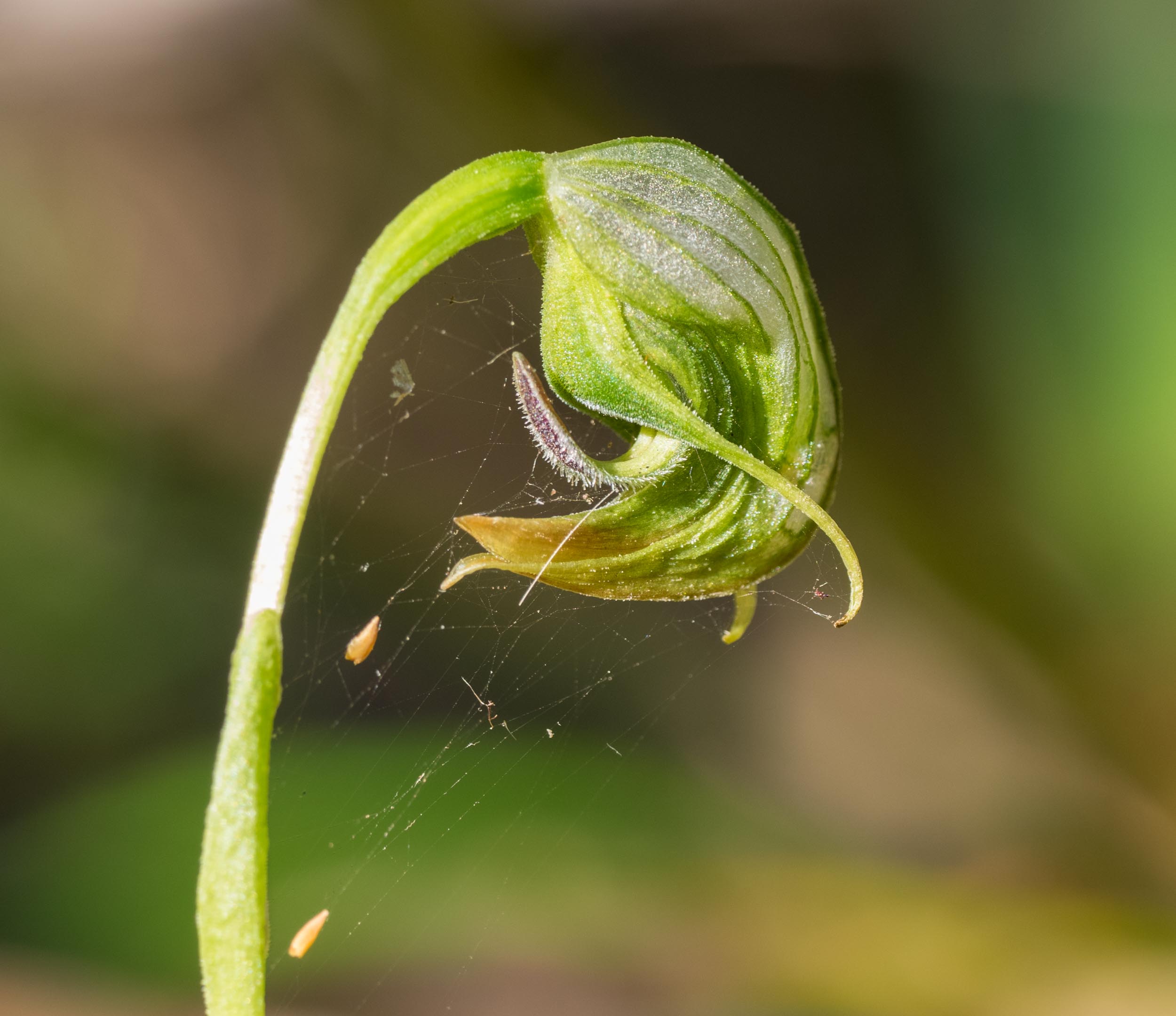


Webs usually mean spiders. But we had often wondered why a spider would take up residence in an orchid flower. Knowing that these orchids attract small flies, we have an obvious answer! We haven't seen the spider in question yet. Another project!










